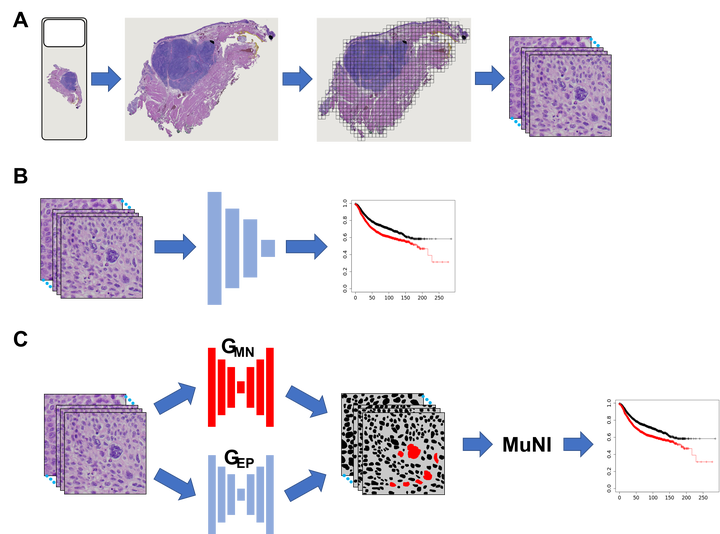
Abstract
Artificial intelligence has been applied to histopathology for decades, but the recent increase in interest is attributable to well-publicized successes in the application of deep-learning techniques, such as convolutional neural networks, for image analysis. Recently, generative adversarial networks (GANs) have provided a method for performing image- to-image translation tasks on histopathology images, including image segmentation. In this issue of the JCI, Koyuncu et al. applied GANs to whole-slide images of p16-positive oropharyngeal squamous cell carcinoma (OPSCC) to automate the calculation of a multinucleation index (MuNI) for prognostication in p16-positive OPSCC. Multivariable analysis showed that the MuNI was prognostic for disease-free survival, overall survival, and metastasis-free survival. These results are promising, as they present a prognostic method for p16-positive OPSCC and highlight methods for using deep learning to measure image biomarkers from histopathologic samples in an inherently explainable manner.